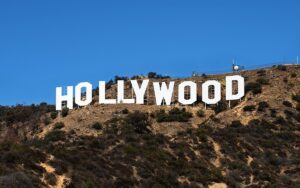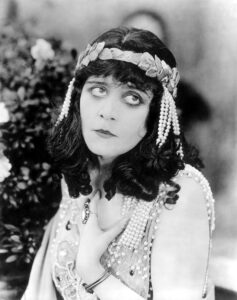Film Studios and The Star System – The History of Hollywood

In the 1920s, cinema was already very well established. In the United States, major banks were investing in films. At that time, two systems of cinema operation emerged, namely the studio system and the star system.
The history of American cinema is inextricably linked to the institution of major studios, which determined the shape of American cinematography. In the first decade of cinema, the most important of these were the Edison Manufacturing Company and Biograph. The Edison studio specialized in gangster films and westerns, while Biograph made films about famous personalities (such as Pope Leo XIII or Queen Victoria), as well as documentaries. In 1908, these and several minor studios formed a joint corporation, MPPC (Motion Picture Patents Company), which completely dominated the American film market for many years.
History of Hollywood
Quite quickly, independent film producers concentrated mainly in New York and Chicago decided to break MPPC’s monopoly. Coming primarily from a community of Jewish immigrants from Eastern Europe, the filmmakers chose California, specifically the Hollywood hills of Los Angeles, as the Mecca of the American film industry.
In 1911, Al Christi on Sunset Boulevard established the first movie studio. It turns out that the choice of California was not accidental, as it was influenced by geographical factors (varied terrain, lots of sunshine and no winter), as well as the availability of cheap labor used as extras. In turn, the name Hollywood itself means as much as “holly,” and its history dates back to the Wilcox ranch, which gave it just such a name. The inscription on the hills appeared in 1923, initially in the form “Hollywoodland.” It was shortened in 1949; that’s when it was declared a monument.

Theda Bara
Carl Laemmle founded one of the most important film studios in Hollywood – the Universal Film Manufacturing Company. Another Hollywood film company was Paramount Pictures by Adolph Zukor and Lesse L. Laski. Such stars as Mary Pickfort and Rudolf Valentino signed contracts with it. In this enumeration, it is also impossible to omit the William Fox label and the Metro Goldwyn Mayer studio, established at the dawn of the 1920s. One of the founders of the latter label was Marcus Loew, after whom the well-known logo with a roaring lion was created. By the end of the second decade of the 20th century, Columbia Pictures, Warner Brothers (Warner Bros) and Radio-Keith-Orpheum rounded out the list of film studios.
Star system – cinema stars
The history of Hollywood is, of course, not only the system of film studios, as the American star system began to operate in parallel with it. It was based on promoting individual actors, building a kind of myth around their biographies, and then using it for marketing purposes. Interestingly, in the first decade of cinema, actors were largely anonymous (their names rarely appeared on film placards). In the first decade of the 20th century, studios began to use the faces of attractive actresses to promote their productions; these were known as girls, for example, Gene Gauntier functioned as The Kalem Girl.
It wasn’t until Carl Laemmle initiated the star system. In 1911, when he managed to sign a contract with his former “girlfriend” (Florence Lawrence) of the Biograph label, to add spice to the whole event, he announced her death to the public and then her miraculous rebirth on his own label. This fact generated great interest among the public and became a real media hit. The first real movie star, however, became Theodosia Burr Goodman, known under the artistic pseudonym Theda Bara. A myth of a seductress with Oriental roots was created around her. In reality, coming from a family of Jewish immigrants from Europe, in the eyes of the public she was to be regarded as a woman raised in Egypt, with a truly African temperament. She was cast in exotic roles of great heroines – Cleopatra, Carmen or Salome.
